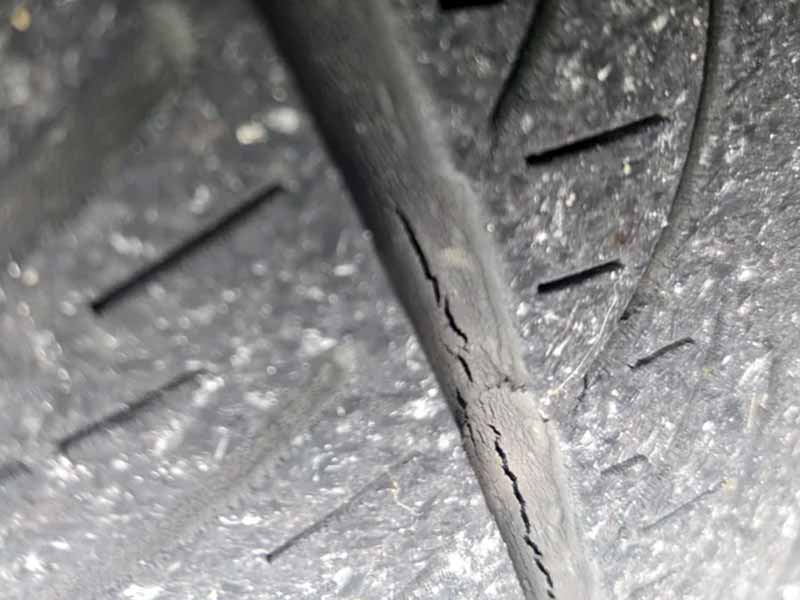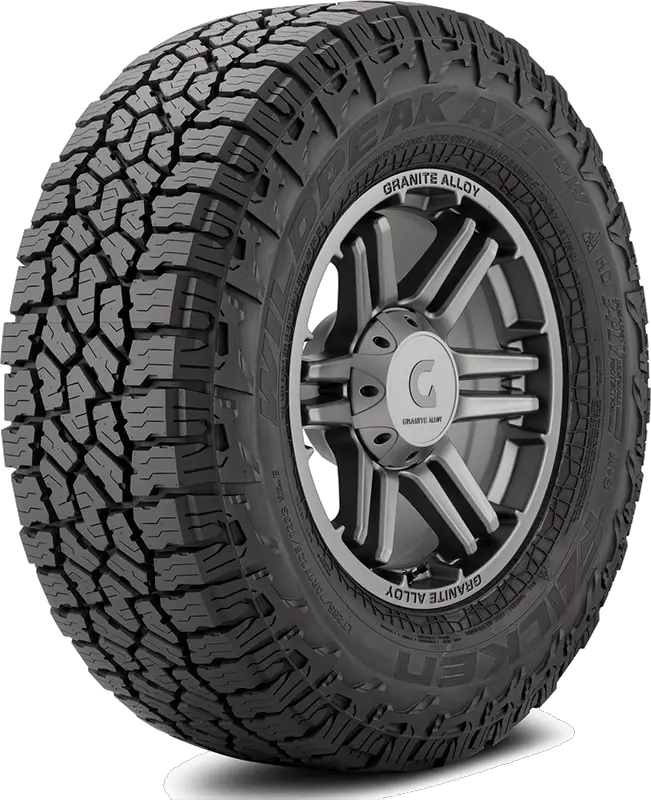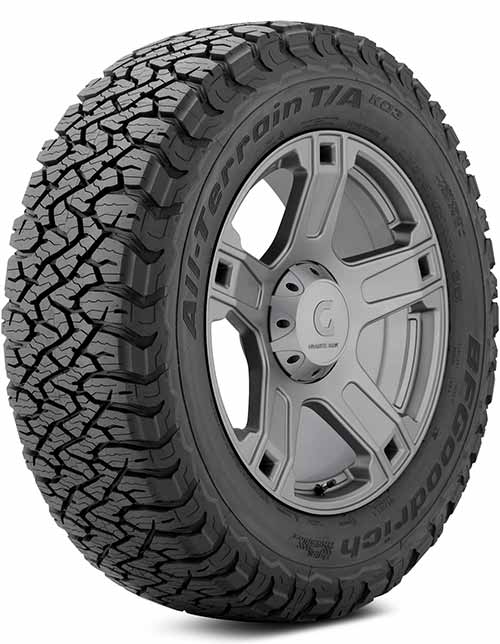Have you ever noticed those tiny lines and grooves forming on your tire treads and wondered if they’re just a cosmetic nuisance or a serious safety hazard? Understanding the difference can be the key to not only maintaining your vehicle’s health but also ensuring your safety on the road.
When Are Cracks In Tire Tread Unsafe?
Cracks in tire treads become unsafe when they are deep, widespread, or located on the tire’s sidewall. Minor, superficial cracks are typically cosmetic and don’t impact the tire’s overall safety.
In this article, we’ll explore the causes of tire cracks, how to differentiate between cosmetic and hazardous cracks, and the best ways to handle them. Plus, we’ll share practical tips on how to prevent these cracks from cropping up in the first place.
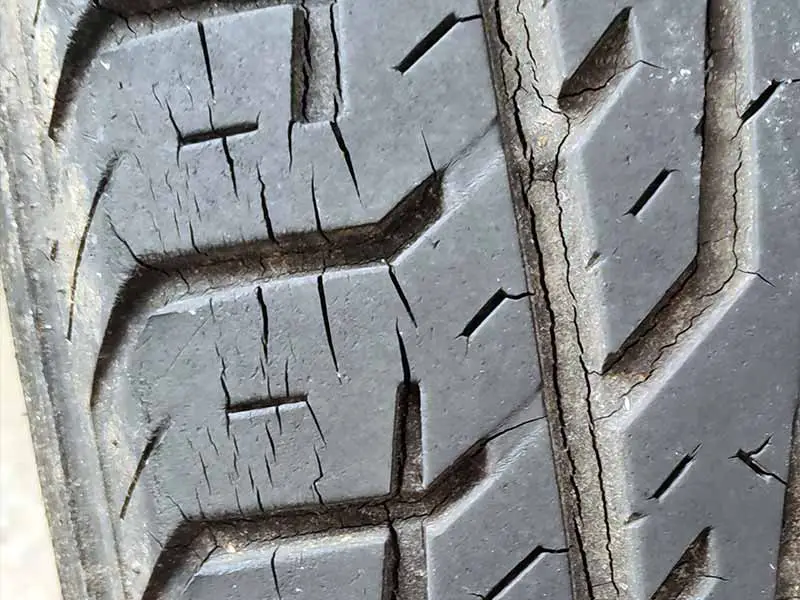
Understanding Tire Cracks
Tire cracks: those little lines and grooves that sometimes show up on your tires might seem like no big deal, but they’re kind of like the tire’s way of talking to you. They’re saying, “Hey, pay attention to me! I might need some care.” In this section, we’ll delve into what causes these cracks and the different types you might encounter. It’s not just about the looks; it’s about keeping you safe on the road.
What Causes Tire Cracks?
- Aging: Just like anything else, tires get older. Over time, the rubber starts to break down, which can lead to cracks. It’s a natural process, but it’s one you need to keep an eye on.
- Dry Rot: Ah, dry rot. This one’s a major culprit for tire cracks. Dry rot happens when your tires are exposed to too much sun or aren’t used for a long time. The rubber loses its flexibility, leading to cracks. To get the lowdown on dry rot, check out What Causes Tires to Dry Rot.
- Improper Use: We’re talking about overloading your vehicle or not inflating your tires properly. Both can put extra stress on your tires, leading to—you guessed it—cracks.
- Extreme Temperatures: Just like us, tires aren’t fans of extreme weather. Too hot or too cold, and they start to show signs of wear, including cracking.
Types of Tire Cracks
Now, not all cracks are created equal. Some are just surface-level issues, while others are red flags.
- Small, Superficial Cracks:
- These are often just cosmetic. You might see them as your tires age, and usually, they’re not a big safety concern.
- Large, Deep Cracks:
- These are the ones to watch out for. If you see large cracks, especially if they’re deep, it’s time to start thinking about replacing your tires. Deep cracks can compromise the tire’s integrity and put you at risk on the road.
How to Spot Troublesome Cracks
Here’s a bit of practical advice on identifying those worrying cracks:
- Location, Location, Location:
- If the cracks are on the tire’s sidewall or between treads, they deserve extra attention.
- Depth and Width:
- Deep and wide cracks are more concerning than shallow ones.
- Distribution:
- Are the cracks isolated, or are they all over the tire? Widespread cracking is a bigger issue.
So, what’s the takeaway? Well, keep an eye on those tires. Small cracks might just be your tire showing its age, but larger, deeper ones can be a sign of serious trouble. And when in doubt, it’s always a good idea to get a professional’s opinion. After all, your tires are the only part of your car that actually touches the road, so their health is key to your safety.
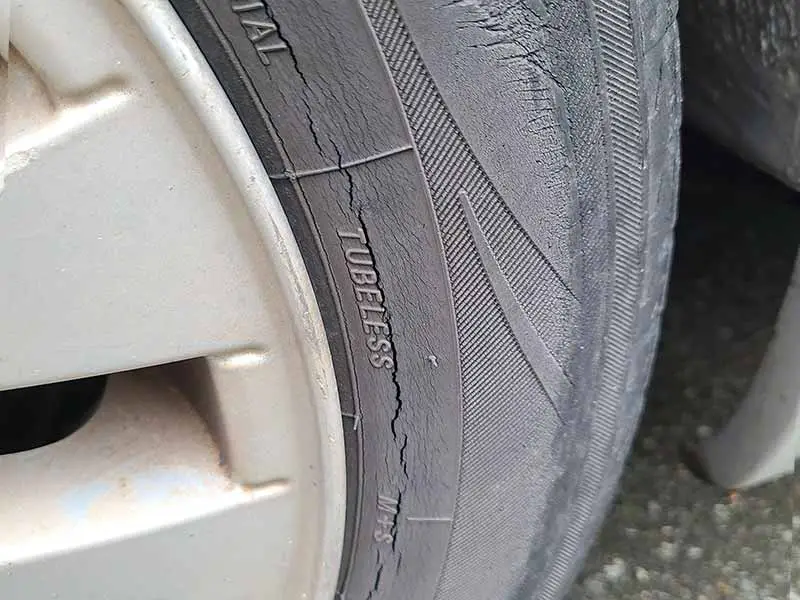
Assessing the Safety of Tire Cracks
When it comes to tire cracks, not all are a call for alarm. Some are just signs of normal wear and tear. But then there are those that scream, “It’s time for a change!” This section is all about distinguishing between the harmless and the hazardous. Let’s break it down so you can drive with confidence, knowing when it’s just a cosmetic issue and when it’s a safety concern.
When Are Small Cracks in Tires Normal?
- A Sign of Aging: Small cracks often appear as tires get older. It’s like finding a few gray hairs – not necessarily a problem, just a sign of aging.
- Cosmetic Nature: These small cracks, usually on the surface, don’t typically affect the tire’s performance or safety.
- Regular Check-ups: Keeping an eye on these cracks is key. If they remain small and superficial, they’re generally not a concern.
Identifying Hazardous Cracks
Now, let’s talk about the cracks that should have you heading to your tire professional:
- Depth and Spread: Cracks that are deep and spread over a large area of the tire are red flags. They can weaken the tire’s structure.
- Location Matters: Cracks on the tire’s sidewall or near the tread can be especially dangerous. These areas are crucial for tire integrity.
- Changes Over Time: If you notice the cracks getting bigger or deeper, it’s time to act.
The Impact of Cracked Sidewalls
- Vulnerability to Blowouts: Sidewall cracks are particularly risky because they can lead to sudden tire blowouts.
- Driving Risks: A blowout, especially at high speeds, can cause loss of control, posing a significant danger to you and other road users.
- Visual Inspection: Regularly inspect your sidewalls for cracks, bulges, or other irregularities.
Remember, if you’re unsure about the condition of your tires, always err on the side of caution and consult a professional. Tires are the foundation of your vehicle’s safety on the road, so it’s crucial to ensure they are in top shape. And for those dealing with the issue of dry rot, our article titled When to Replace Tires with Dry Rot offers valuable insights into making the right call.
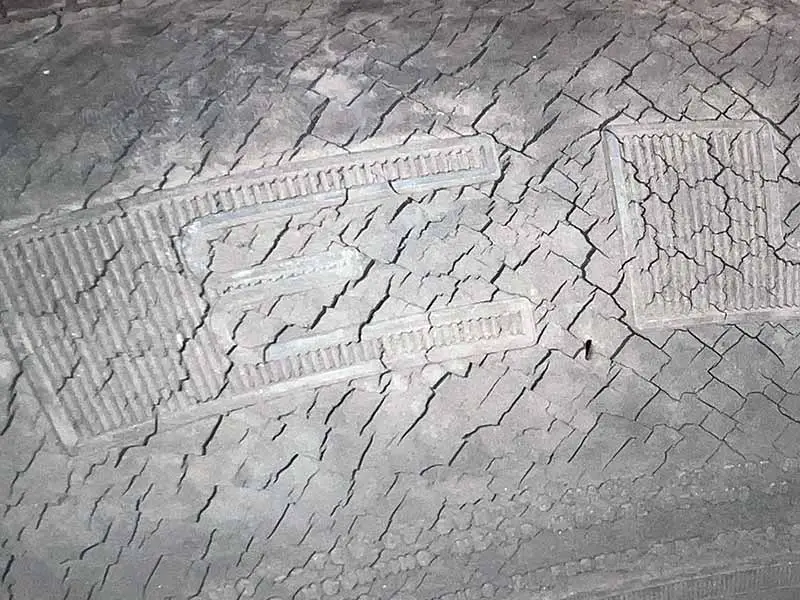
Dealing with Tire Cracks
Alright, so we’ve covered how to spot and assess tire cracks, but what next? Let’s talk about how to handle them. Whether it’s a minor cosmetic issue or a serious safety concern, knowing how to deal with tire cracks can save you a lot of headaches (and potentially a lot of money) down the road.
When Should a Cracked Tire Be Replaced?
This is the big question, isn’t it? Here’s what you need to know:
- Deep and Widespread Cracks: If you’re seeing cracks that go deep into the tire or are spread out across a large area, it’s replacement time.
- Sidewall or Tread Cracks: Cracks here are a major concern because they directly affect the tire’s ability to perform safely.
- Age of the Tire: Remember, if your tires are approaching or have passed that 5-7 year mark, those cracks might be telling you they’re ready for retirement.
Cosmetic Tire Cracking
Sometimes, cracks are all about appearances:
- Surface-Level Cracks: These are usually shallow and don’t impact the tire’s structural integrity.
- Monitor Regularly: Keep an eye on them. If they stay superficial, you’re likely okay for a while.
- Aesthetics vs. Safety: While they might not look great, these cracks are usually more of an aesthetic issue than a safety one.
Temporary Solutions and Precautions
In some cases, you might opt for a temporary fix:
- Fillers for Minor Cracks: There are products out there designed to mask small, cosmetic cracks.
- Professional Inspection: Always have a pro take a look before deciding on a temporary fix. Safety first!
- Keep an Eye on Them: If you’re going the temporary route, regular monitoring is key to ensure the cracks aren’t getting worse.
Dealing with tire cracks can be a bit of a balancing act. It’s about knowing when it’s just a visual issue and when it’s a signal for a necessary change. And remember, for more in-depth information on when cracks cross the line from cosmetic to dangerous, When is Dry Rot on Tires Dangerous has the answers you’re looking for.
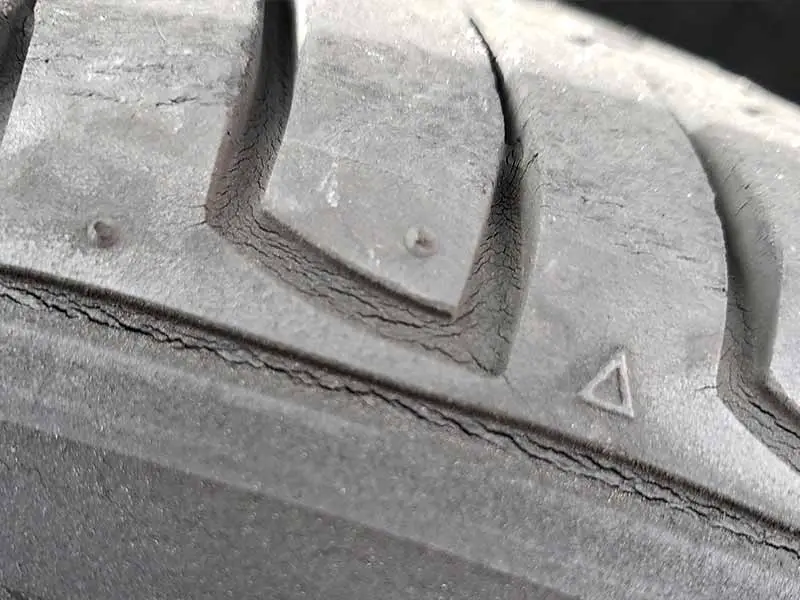
Preventing Tire Cracks
Now that we’ve talked about spotting and dealing with tire cracks, let’s shift gears and focus on prevention. After all, the best way to handle tire cracks is to stop them from happening in the first place. Here are some straightforward, practical tips to keep your tires looking and performing their best for as long as possible.
Regular Maintenance and Care
First things first, regular maintenance is key. It’s like taking care of your own health – the better you treat your tires, the longer they’ll last.
- Regular Inspections: Make it a habit to check your tires regularly for any signs of wear, including cracks.
- Proper Inflation: Keeping your tires inflated to the right level is crucial. Both overinflation and underinflation can lead to cracking.
- Tire Rotation: Regular tire rotation helps ensure even wear, which can prevent cracking.
Protecting Tires from Extreme Conditions
Just like you’d bundle up in the cold or seek shade in the sun, your tires need protection from extreme weather.
- Avoid Direct Sunlight: Whenever possible, park in the shade or a garage to protect your tires from UV rays.
- Cold Weather Care: In colder climates, try to keep your vehicle in a garage to protect the tires from freezing temperatures.
- Cleanliness: Keep your tires clean from oils, chemicals, and other substances that can degrade rubber over time.
Remember, a little bit of care can go a long way in extending the life of your tires and preventing those pesky cracks. It’s about being proactive and paying attention to the little things. For more details on keeping your tires in top condition, How to Prevent Dry Rot on Tires is a great resource.
Resources
Below are some links you may find helpful when learning about tires:
- Tire safety tips – National Highway Traffic Safety Administration (NHTSA)
- Tire dry rot: Causes and how to fight it – Discount Tire
Final Thoughts
We’ve covered how to spot troublesome cracks, the risks associated with them, and how regular maintenance can prevent these issues.
Remember, while small cracks might not be a cause for immediate concern, deeper and more widespread cracks warrant a professional inspection and possibly a tire replacement.
Good luck and happy motoring.
